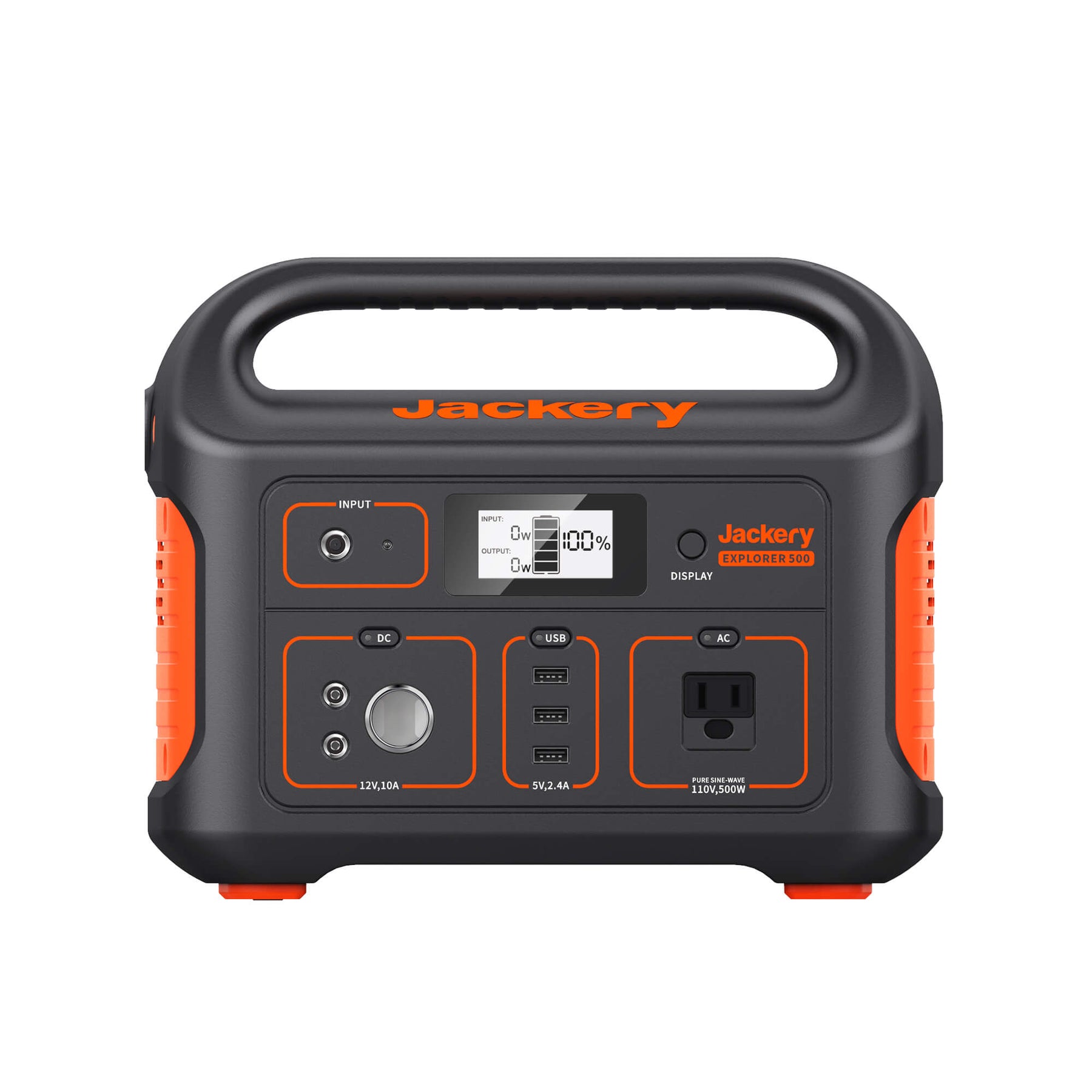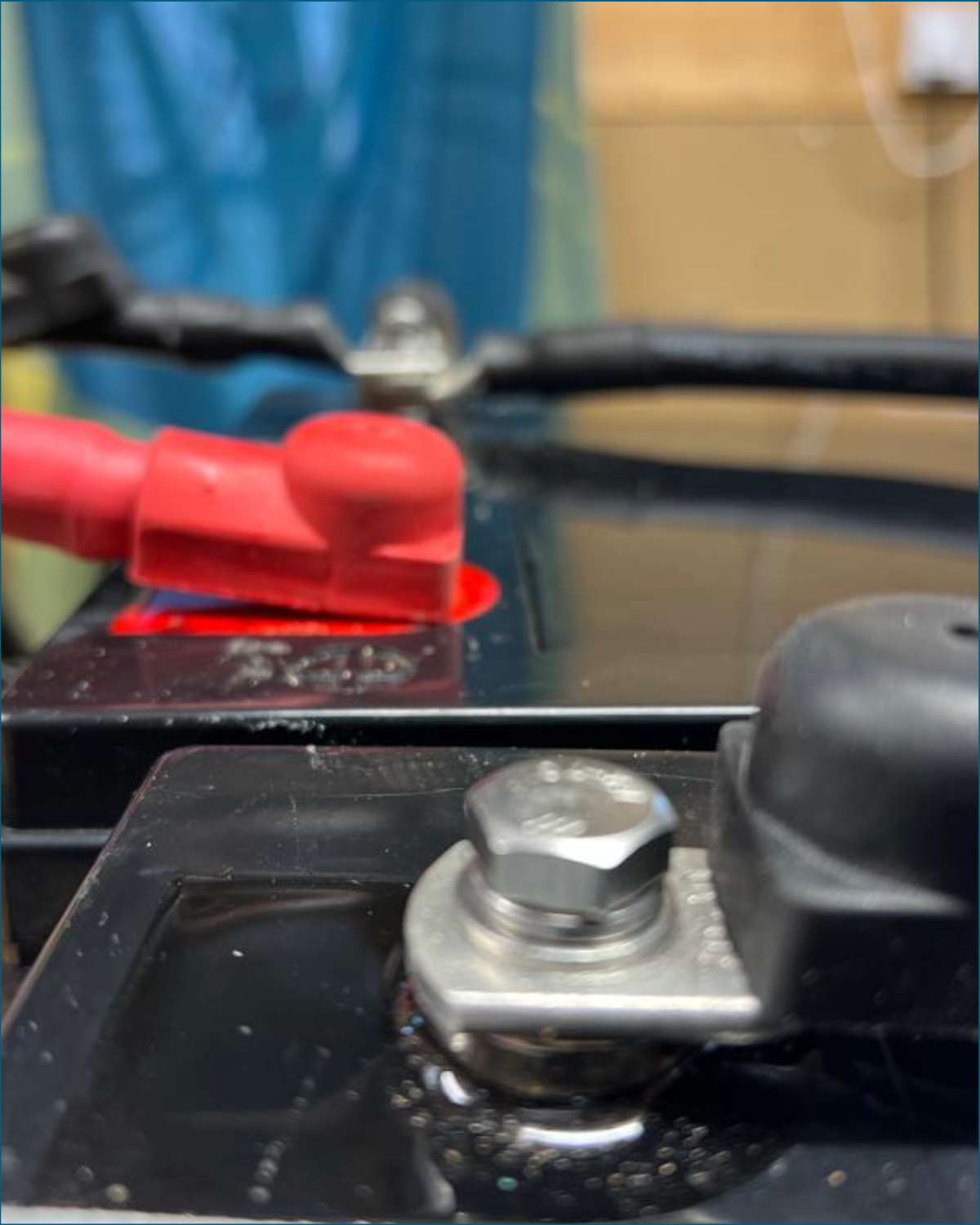If you’re looking for an easy way to power your van, especially if it’s not already equipped with a DIY electrical system, then the Jackery Portable Power Stations could be just what you need!
Some Jackery Portable Power Stations are perfect for van life! Others are best suited for camping weekends. They are easy to use and can be stored anywhere. Plus, they provide power when you need it most.
They are reliable, affordable, and easy to use. But with seven models to choose from, which one is right for you?
Here’s everything you need to know about Jackery portable power stations, including what they are, why Jackery is a great brand, a comparison of all the Jackery Explorer models and a nifty little calculator so you can figure out what size Jackery you need.
When you click on links to various merchants on this site and make a purchase, this can result in this site earning a commission. As Amazon Associates, we earn from qualifying purchases. For more info, please check our disclosure page.
What Is A Portable Power Station?
A portable power station is basically a user-friendly, rechargeable power bank you can take with you wherever you go. They have multiple charging sources, so you can recharge from a regular AC socket, solar panels, or even from your vehicle’s engine as you drive.
They are great for when you need an extra power boost, whether camping, tailgating, or just hanging out at the beach.
They are small and lightweight, so they are easy to pack and take with you on the go. They come in various sizes and capacities, so you can most likely find one that’s just right for your needs.
Portable power stations have become more popular as people have become more eco-conscious. In addition, getting off-grid used to mean having no access to electricity – but times have changed. Now, you can recharge all your devices no matter how remote you are.
Why Jackery?
In 2015, Jackery was the first brand to bring portable lithium power to the mass market. And it was a game-changer, providing access to clean, reliable power on the go, in emergencies, and as a backup power source.
Like many other startups, Jackery was born in Silicon Valley, California. Among solar outdoor unit manufacturers, Jackery is now one of the biggest in the world.
Available in over 30 countries, the company’s flagship product is the Jackery Explorer range of portable power stations. They’re used globally in various settings, from camping to disaster relief.
We tested 3 of the 7 power banks in the range and are completely hooked on their quality build, design, and effectiveness.
Jackery Explorer Series Comparison Tables
What Size Jackery Do I Need?
What size Jackery you need depends on how much energy you need to run your devices. Use the calculator below to enter your devices and see which models will meet your needs, and how long they’ll last without needing to recharge.
Jackery Portable Power Stations – Complete Product Line
Mighty Explorer Series
Key Specs:
- 1002Wh Capacity at 21.6V
- Output ports: 3 X AC (110V, 1000W, 2000W surge), 1 X USB Type-C, 1 X USB Type-A, 1 x Quick Charge 3.0, 1 x 12V DC charger
- Charging time (0-80% battery): Wall outlet: 7 hours, Car charger: 12 hours, 2x 100W Solar Panels: 8 hours
- Weight: 22.04 lbs, Dimensions: 13.1 x 9.2 x 11.1 in
What can it run?
Most outdoor essentials including larger devices such as blenders, refrigerators, electric grills, pellet smokers, and of course, basic electronics like laptops and phones
Best used for:
When you need a power solution for all your devices but in a short period. Examples: weekend camping, backup power during a storm
Key Specs:
- 1534Wh Capacity at 24.2V
- Output ports: 3 X AC (110V, 1800W, 3600W surge), 1 X USB Type-C, 1 X USB Type-A, 1 x Quick Charge 3.0, 1 x 12V DC charger
- Charging time (0-80% battery): Wall outlet: 6 hours, Car charger: 15.5 hours, 2x 100W Solar Panels: 9.5 hours, 4 x 100W Solar Panels: 5 hours
- Weight: 35.2 lbs, Dimensions: 14 x 10.4 x 12.7 in
What can it run?
It has 1800W AC output which means it can run almost any device, including microwaves, pressure cookers, and coffee makers. It can, of course, run the smaller devices and portable electronics for you as well.
Best used for:
When you plan for a summer camping trip and need a reliable power solution to run your devices.
Key Specs:
- 2060Wh Capacity at 36V
- Output ports: 4 X AC (110V, 2200W, 4400W surge), 1 X USB Type-C, 1 X USB Type-A, 1 x Quick Charge 3.0, 1 x 12V DC charger
- Charging time (0-80% battery): Wall outlet: 2.6 hours, Car charger: 18 hours, 1 x 100W Solar Panels: 13 hours, 4 x 100W Solar Panels: 3 hours
- Weight: 43.2 lbs, Dimensions: 15.5 x 12.2 x 12.7 in
What can it run?
With its four powerful 2200W AC outputs, you can run almost anything – including power tools, electric burners, hairdryers, and coffee makers. It’s almost like having the same power you have at your home.
Best used for:
With this power station, you can camp indefinitely. If you are going on a boondocking trip for the next few months, take it. If you want to live out of your van next year, this is a good choice. It’s a great solution for all your electrical needs.
Compact Explorer Series
Key Specs:
- 167Wh Capacity at 14.4V
- Output ports: 1 x AC (110V, 100W, 150W surge), 1 X USB Type-C, 2 X USB Type-A, 1 x 12V DC charger
- Charging time (0-80% battery): Wall outlet: 5 hours, Car charger: 5 hours, 1 x 60W Solar Panel: 4.5 hours
- Weight: 3.97 lbs, Dimensions: 7.4 x 4.5 x 6.7 in
What can it run?
This portable unit can power your small electronic devices such as phones, cameras, and laptops for a few hours.
Best used for:
It’s a small unit for charging your phones and laptops when you don’t want to remain confined to your RV for the day. It’s just under 4 pounds; you can take it on a trek or a backpacking trip.
Key Specs:
- 240Wh Capacity at 14.4V
- Output ports: 1 x AC (110V, 200W, 400W surge), 2 X USB Type-A, 1 x 12V DC charger
- Charging time (0-80% battery): Wall outlet: 5.5 hours, Car charger: 6.5 hours, 1 x 60W Solar Panel: 7 hours
- Weight: 6.6 lbs, Dimensions: 9.05 x 5.24 x 7.87 in
What can it run?
If you want to run small devices that run on AC power, then this is the bare minimum that you should go for. The Jackery 160 is not a great option for these devices. One glaring problem here is the lack of a USB Type-C port to charge your smartphone or tablet.
Best used for:
It’s a great unit to run your fan and portable TV for the entire day if you just want to soak in the summer sun outside your RV. It’s also great for backyard camping and day camping.
Key Specs:
- 293Wh Capacity at 14.4V
- Output ports: 1 x AC (110V, 300W, 5000W surge), 3 X USB Type-A, 1 x 12V DC charger
- Charging time (0-80% battery): Wall outlet: 5.5 hours, Car charger: 5.5 hours, 1 x 100W Solar Panel: 7.5 hours.
- Weight: 13.32 lbs, Dimensions: 11.8 x 7.6 x 9.2 in
What can it run?
The 300W battery is good enough to run most of your lower wattage electronics for nearly a week, such as laptops, TVs, fans, mobile phones, coolers, and other things. It has two AC charging ports and can run 3 USB devices simultaneously, so if you are running everything simultaneously, it will last the whole day.
Best used for:
This is a great device if you often go on impromptu camping trips. It can charge up quickly and run up to 5 devices for you.
Key Specs:
- 518Wh Capacity at 21.6V
- Output ports: 1 x AC (110V, 500W, 1000W surge), 3 X USB Type-A, 1 x 12V DC charger
- Charging time (0-80% battery) (0-80% battery): Wall outlet: 5 hours, Car charger: 5 hours, 1 x 60W Solar Panel: 4.5 hours
- Weight: 3.97 lbs, Dimensions: 7.4 x 4.5 x 6.7 in
What can it run?
It can run most of your mid to heavy electronics such as blenders, heating blankets, laptops, and CPAP devices for 4-8 hours.
Best used for:
If you need to run some heavier devices such as an air pump, a CPAP device, or a blender for the whole day, this is Jackery’s best offering for it. One disappointing aspect is the lack of ports (only 1 AC port, No USB Type-C ports).
Brand Details
Where Are Jackery Portable Power Stations Manufactured?
As per this source, all of Jackery’s products, including the portable power stations, are manufactured in China.
But Are They Any Good?
What’s the Warranty Like?
The warranty on all Jackery portable power stations is for 24 months. Most users online say that the warranty and replacement process is fairly smooth as long as you follow their guidelines and provide all the documents.
Points to note
- Jackery measures the warranty from when you bought the product, not when it was delivered to your home.
- Jackery will only replace your power station if there is an issue with the build quality and material.
- Only the original buyer can claim the warranty; if you bought your Jackery product from someone else, you could not claim it.
Jackery may refuse to service their warranty if they find:
- Any kind of abuse, changes to the product, accidental damage, misuse, or any other problems that may occur if you used the device for anything other than normal use.
- The warranty is automatically voided if you attempt to repair it yourself or got someone to open it.
- Jackery would not offer a warranty if you bought your product through an online auction.
- The battery cell needs to be charged within the first week of receiving their power station, and you need to keep charging them at least once every six months. Otherwise, the cells will not be covered under warranty.
How to get the warranty?
Reach out to their team via email at [email protected]. You will need to produce the receipt of sale of the original purchase with your name on it. If you don’t have it, you might need to give them some kind of proof to show that the warranty on the product is still valid and you were the one who made the purchase.
Any Known Quality Issues?
There are very few quality issues with the product. Here are a few things that consumers often complain of:
- The battery used lasts for only 500 cycles, by which time it drops to 80% capacity. This is not very good compared to most deep cycle batteries that RVers are used to working with.
- There is an auto-cutoff function on the battery if the wattage used on the product is very low (under 10W for six hours). This means that Jackery will automatically shut down your devices like CPAP or a mini-fridge if they don’t draw enough power. This can be dangerous, especially for patients with sleep apnea.
- Not a technical problem, but Jackery does not give you the 30-day return policy if you buy it from partner channels like Amazon.
What Can the Jackery Explorer Power?
The Compact Power Stations are good for powering most of your low-wattage electrical equipment such as lights, fans, laptops, phones, TVs, and other small devices such as drones and cameras.
The Mighty Power Stations, on the other hand, are meant for bigger products that require higher power. You can choose the right product to power your microwaves, blenders, refrigerators, and even burners and power tools.
How Long Does the Jackery Portable Power Station last?
The unit is pretty solid, so you would ideally not have durability problems. The battery, however, does not have a very long life. You can recharge it up to 500 times before reaching 80% capacity.
Depending on how much you use this unit, 500 charges can be anywhere between 2 years to 10 years. However, for permanent van lifers, who will use it every day of the week, I would guess that figure is closer to 2 years. So this is certainly a sore point about the Jackery products.
How Do the Jackery Portable Power Stations Compare to the Competition?
Let’s look at two of Jackery’s major competitors:
1. Bluetti
Bluetti started in 2019 in Walnut, California, with just two 1000W portable power stations with a minimalist design. Since then, they have gone on from strength to strength. Bluetti has a strong range of portable power stations that have several advantages over Jackery’s range:
- They have a longer-lasting battery (2500 cycles)
- Apple-to-apple, they have more charging ports and better ones (more Type-C and Type C-PD ports)
- They are also comparatively cheaper
Some things where the Jackery fares better include:
- Jackery products are comparatively lighter and easier to store and carry
- Jackery has a larger range of products in the Compact segment, whereas Bluetti focuses more on the higher power spectrum
2. Goal Zero
Goal Zero is one of the oldest companies in the portable power station business. They have been around since 2009. They have partnered several times with humanitarian organizations to donate their solar power stations to those who need relief after natural calamities worldwide.
Jackery has a lead on most of Goal Zero’s products in terms of:
- A better number of ports at each level
- Faster charging options
- Less bulky products
Goal Zero does have certain advantages, such as:
- A sturdier build
- It also has a lot of products in the higher wattage segment, such as 6000W and 3000W, which Jackery does not have.
Conclusion
Jackery’s wide range of well-built, easy-to-use, solar-powered products suits every need for portable power. It makes them a great product for almost every camper/ van lifer.
Graham Bogie

Graham is a seasoned marine electrical engineer with two decades of experience designing customized electrical systems for plant machinery and converting campers and overland vehicles. His expertise has led him to author the reputable Campervan Electrics Handbook and become the chief designer of the RV Wiring Design Tool. As a knowledgeable figure in the field, his YouTube channel, blog, Facebook group, and newsletter, offering electrical advice and product reviews, reach more than a million users each year.










